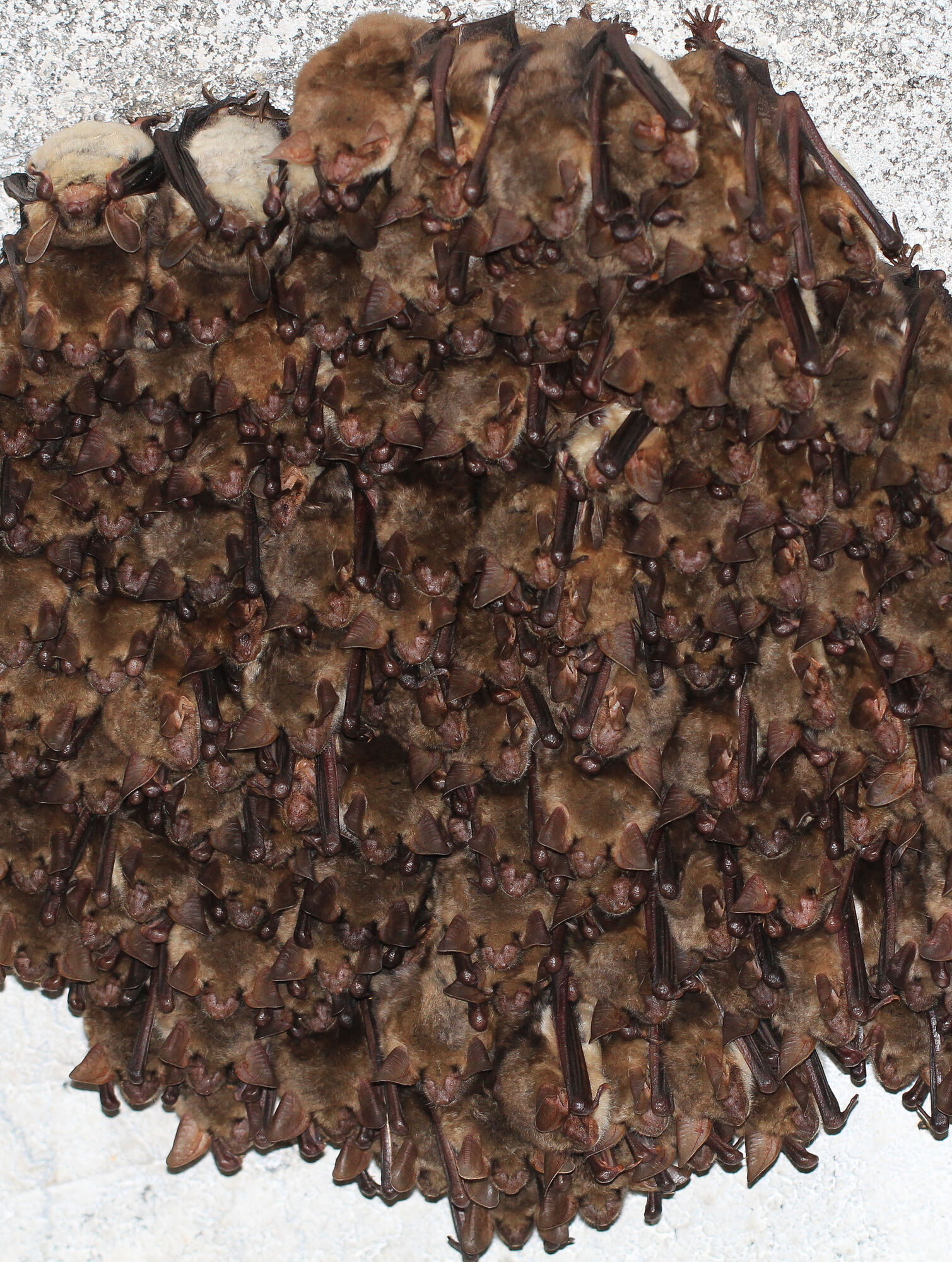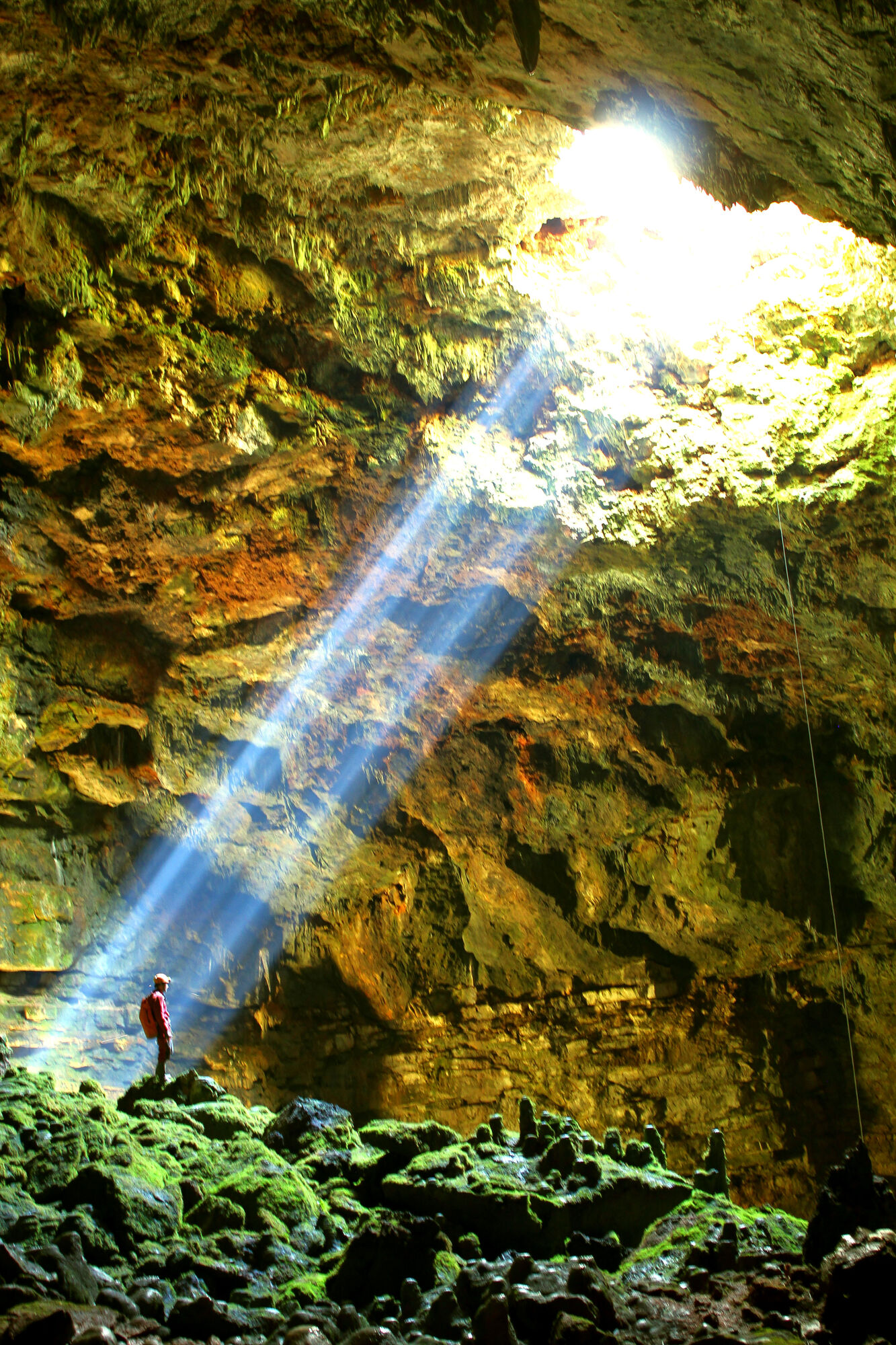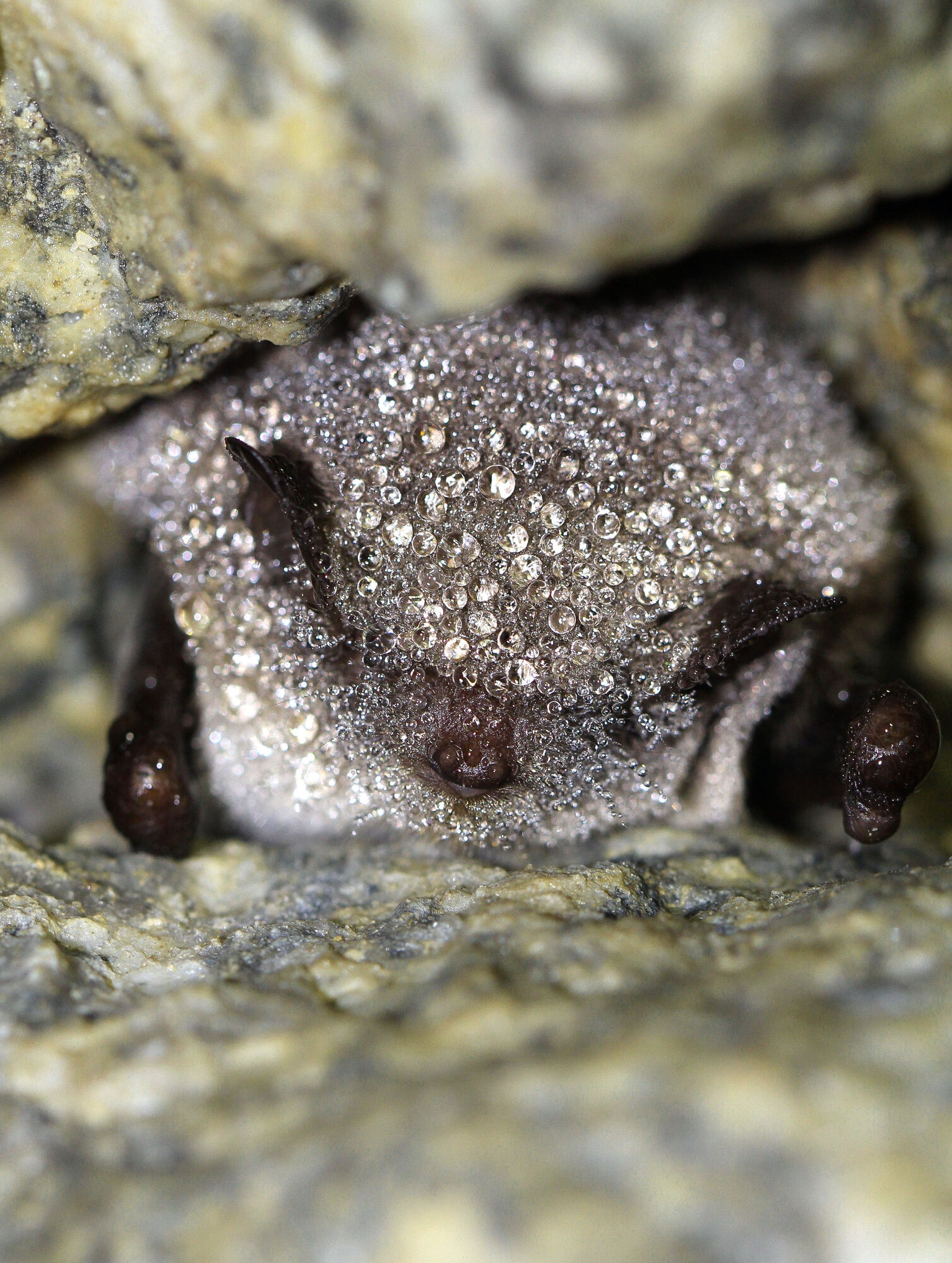Diseases do not only affect humans: in 2006–2007, a sudden and unexplained bat mortality was observed in a cave in New York State, USA. The affected animals presented with a white powdery growth on their noses, caused by a previously unknown fungus, Pseudogymnoascus destructans. This fungal infection, originally known as white-nose syndrome and now known as white-nose disease, spread rapidly across North America, decimating hibernating bat populations with annual mortality rates exceeding 90%, and resulting in the death of several million bats. Researchers discovered that this fungus originated in Eurasia, where it coexists with native bat species without causing large-scale mortalities. Its accidental introduction to North America, however, triggered one of the most devastating wildlife epidemics ever recorded in mammals.
White-nose disease, a disease we thought we understood well
For nearly two decades, the narrative around this pathogen appeared relatively straightforward: a single pathogen, a clearly identified geographic origin (Europe), and well-understood spreading mechanisms. However, new genetic evidence reveals a far more complex picture, challenging our certainties about the origin, diversity, and evolutionary dynamics of this pathogenic fungus.
Not one, but two fungal species cause the disease
Until recently, Pseudogymnoascus destructans was considered the sole pathogen responsible for white-nose disease. However, the study that was recently published in Nature and is based on the analysis of 5,479 samples from 27 countries across three continents (Europe, Asia, and North America), reveals the existence of two different fungal species capable of causing the disease.
Only one of them has been introduced to North America so far. “This discovery opens new avenues for understanding the evolution of virulence and how these pathogens interact with their hosts in different geographical contexts,” explains Dr. Nicola Fischer, first author of the study. She completed her doctorate on the subject at the University of Greifswald in Germany and the University of Montpellier in France. “We thought we knew our enemy, but we have now discovered it is twice the size and potentially more complex than we had imagined,” summarises Dr. Fischer.
Bats are at serious risk if the second fungus species reaches North America
The discovery of a second pathogenic fungus species that can cause white-nose disease and displaying distinct host specialisation from the previously described species, represents a significant new risk for bat conservation. Although this second species has not yet been detected in North America, its potential introduction could endanger bat species that have so far remained unaffected by the first. Alarmingly, bat species currently showing signs of recovery from the initial pathogen may even face renewed threats if this second species spreads.
Origin of the introduction to North America finally clarified
Thanks to the genetic analysis of more than 5,400 samples collected across Eurasia and North America, the study was able to identify where the North American white-nose disease epidemic originated: the Podillia region in Ukraine. This area, which is home to some of the world's largest cave systems, has been a popular destination for international cavers— particularly from North America—since the end of the Soviet Union.
The results suggest that the accidental introduction of the fungus to North America—most likely via contact with cave explorers from New York State, where the disease was first detected—was a single event. “This work brings an end to nearly two decades of speculation about the origin of white-nose disease in North America and powerfully illustrates the profound impact a single translocation event can have on wildlife,” explains Dr. Sébastien Puechmaille, coordinator of the study at the University of Montpellier.
Dangers in the dark: biosecurity in cave research key to preventing the spread of disease
This discovery highlights the major risks that caving activities pose for the spread of pathogens and underscores the urgency for a better understanding of “biological pollution” associated with human travel. “Preventing the unintentional transport of pathogenic fungi such as Pseudogymnoascus destructans must become a priority in conservation and health management strategies—for the protection of both wildlife and humans,” says Dr. Sébastien Puechmaille. Thorough and systematic cleaning of caving equipment is essential: studies show it drastically reduces the presence of viable fungal spores and thus limits the spread of the fungus responsible for white-nose disease.
Volunteers at the heart of scientific findings
This study would not have been possible without an exceptional volunteer effort. Thanks to the involvement of more than 360 volunteers in locations all over the northern hemisphere—mostly chiropterologists—the researchers were able to analyse a truly exceptional dataset. “This project demonstrates the power of citizen science. With the right training and networks, volunteers can help generate data of outstanding quality, at scales that would otherwise be unachievable,” concludes Dr. Sébastien Puechmaille.
Publication:
Nicola M. Fischer, Sebastien J. Puechmaille et al: Two distinct host-specialized fungal species cause white-nose disease in bats (2025). https://doi.org/10.1038/s41586-025-09060-5.
Contacts
Dr. Nicola Fischer
Nicola.Fischerforst.bwlde
Dr. Elisabeth Böker
Press Officer
University Communications
Domstraße 11, Entrance 1, 17489 Greifswald
Tel.: +49 3834 420 1150
pressestelleuni-greifswaldde



